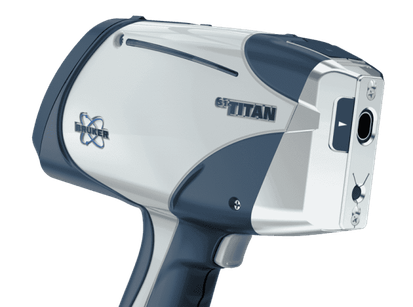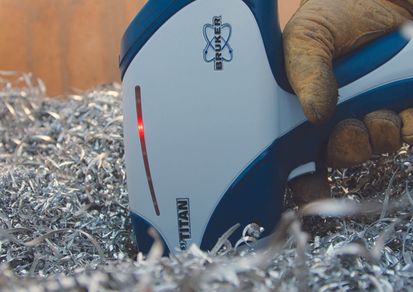What is XRF Analysis?
XRF analysis is a non-destructive analytical technique used to determine the elemental composition of materials. It works by irradiating a sample with high-energy X-rays, which causes the atoms within the sample to emit characteristic X-ray fluorescence radiation. By measuring the energy and intensity of these emitted X-rays, the elements in the sample can be identified and quantified.
X-Ray Fluorescence (XRF) analysis has become an indispensable tool in many industries and scientific fields. This page explains what XRF analysis is, what advantages the procedure brings and where and how it is used today.
Key Benefits of XRF Analysis
Non-destructive and Non-invasive: XRF analysis requires no sample preparation and leaves the sample intact. This non-destructive nature is particularly valuable for analyzing valuable or irreplaceable materials.
Fast: XRF analysis provides quick results, making it suitable for high-throughput applications such as quality control in manufacturing.
Multi-elemental: XRF can simultaneously detect a wide range of elements.
Accuracy and Precision: Modern XRF instruments offer high levels of accuracy and precision, ensuring reliable results even at trace element levels.
Penetration depth: XRF penetration depth can range from micrometers to several millimeters, making it ideal for studying the composition of various materials.

Applications of XRF Analysis
Mining and Geology: XRF is widely used to analyze geological samples for mineral exploration, helping mining companies identify economically viable deposits.
Environmental Analysis: XRF assists in monitoring environmental pollutants by detecting elements like heavy metals in soil, water, and air samples.
Metallurgy and Manufacturing: Manufacturers rely on XRF to verify the composition of alloys, ensuring product quality and compliance with industry standards.
Pharmaceuticals and Food: XRF helps verify the elemental composition of pharmaceutical ingredients, ensuring safety and efficacy. It also plays a role in food quality control, detecting contaminants and nutritional elements.
Art and Archaeology: XRF is essential for art restoration and authentication, as it can reveal the elemental composition of pigments, ceramics, and historical artifacts.
Research and Academia: In scientific research, XRF is invaluable for a wide range of applications, from analyzing rocks from space to studying the elemental composition of biological samples.
Do you want to learn more about these XRF applications?

The Development of XRF Analysis
X-Ray Fluorescence (XRF) technology has come a long way over the past six decades: what was originally a manual analytical method (used in mostly academic science and, at the time, by just a handful of daring industrial ventures) has turned into a familiar, small automatic instrument – a handheld “gun” – capable of the comprehensive and reliable analysis of materials.
Although large laboratory installations are still required today for extra-high levels of analytical precision, most bread-and-butter XRF scanning tasks are performed in situ (i.e. on location, not in a lab) by commercially manufactured handheld xrf analyzer, a best-in-class example of which are the Bruker S1 TITAN and S1 SORTER (both weigh 1.5 kg or 3.3 lbs, with battery!).

Bruker XRF Analysis: A Leader in the Field
Standing at the forefront of XRF innovation Bruker XRF guns are used in metal and alloy analysis, precious metal analysis (including gold, silver etc. purity testing), Positive Material Identification (PMI), various types of Non-Destructive Testing (NDT), in geochemical prospecting, mining, consumer product and electronic scrap testing, HAZMAT screening, contaminated soil assessment, archaeology (archaeometry), museum artwork analysis, and numerous other fields. Get in touch with Bruker to find out whether handheld XRF is the right option for the type of material analysis you have in mind.

Contact form
Bruker Nano Analytics US
5465 E Cheryl Pkwy
Madison WI 53711
Phone:+1-509-736-2999
Bruker Nano Analytics DE
Am Studio 2D
12489 Berlin
Email:info.bna@bruker.com
